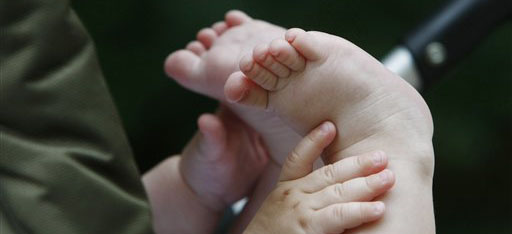Just a week ago, on a chilly Sunday night, a one-month-old baby boy was abandoned in Gravesend, Brooklyn. What happens in such cases?
This time, the baby was found in a stroller in between two parked cars on East 9th Street, between Avenues U and V. Someone from the neighborhood called 911 and told authorities that the baby was all alone. He was taken to Coney Island Hospital, and was reported to be in healthy condition.
A note and a cellphone were found inside the stroller. Police used the cellphone to identify the woman they believe to be the mother who, by coincidence, was also in the hospital. Alevtyna Savchuck, 21, was found unconscious and intoxicated in front of Gravesend Fire Department, just a block away from where she allegedly left the baby. She was charged with acting in a manner injurious to a child.
Heartbreaking incidents like this happen all over the country. According to the National Safe Haven Alliance, since 2001 there have been 2,886 cases of abandoned babies.
But such cases do not have to end up with legal charges against the mother, and the law attempts to safeguard children from physical harm if they are being abandoned. Tim Jaccard is founder of AMT Children of Hope Foundation, which was started by members of the Ambulance Medical Technicians in Nassau County, Long Island, after a series of infant deaths there. He emphasizes that there are options for a mother in crisis. A state law, he points out, can protect a mother who feels she must abandon a child—the Safe Haven Infant Protection Law, also known in other states as Baby Mosses Law, enables mothers to give up an unwanted infant anonymously.
Jaccard, who is also a Safe Haven Coordinator, says a mother need not fear prosecution or arrest as long as her baby has not been abused. Mothers can go to any identified Baby Safe Haven, such as a hospital or fire station. They can also call the toll free hotline 1-866-505-SAFE (7233). In New York, he said, the law states that a mother can leave her baby in any suitable location if proper authorities are notified. In one case, he said, “The closest place for a mother in New York was a 7-Eleven store. She left the baby in a box on top of the counter.” Jaccard said the mother called the Safe Haven hotline before she left her baby, and the hotline notified authorities.
According to Jaccard, every abandoned baby is first taken to a hospital for checkup. Then the local office of the New York State Child and Family Services is informed. When a baby is released from a hospital, the Child and Family Services takes custody. Within 24 hours a fact-finding hearing will be held in court. An attorney advocate will be assigned for the baby.
Next, the baby will be taken to foster adoptive homes or couples that are looking for babies to adopt. For the state to have immunity from prosecution, a legal notice will be published in a local newspaper for 90 days. That period is also a window for relatives to come forward.
Meanwhile, a search of a state list of exploited and missing children is done to ensure that the baby is not on the list. The Putative Father Registry, a list of fathers who had children out of wedlock, which discloses information about such children, is also checked. The court will notify a father if a description of a child fits the information he submitted. The court will order a DNA test and if that man is proven to be the biological father, he has the option to take custody. If a father chooses to give up the child, he has a say in in court on who adopts the child.
The outcome the state prefers, Jaccard says, is for a child to grow up with an extended family or relative, if relatives come forward. “Ninety-nine percent, the attorney advocate will try its best for the relatives to take custody,” said Jaccard.
After the 90 days, a termination hearing will be held in court. The case will be close and the files will be sealed. This is the time that foster parents can go through the adoption process, which usually takes a year.
The biological mother, if ever she changes her mind, can assert her rights and can have again full custody—but only before the adoption process ends. After that, the adoptive parents are the parents.


Leave a Reply